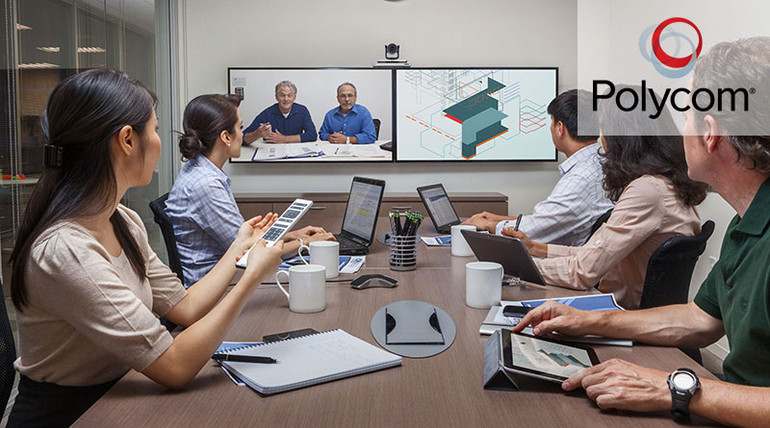One of the killer features that you can set up with a Polycom RealPresence Group 500 video conferencing system is Acoustic Fence.
Polycom Acoustic Fence is a proprietary set of technologies that together limit how much distracting background noise gets transmitted during a conference call. It limits how much noise you send, not how much you receive.
Typical noise reducing technologies include unidirectional microphones that only pick up sound coming from one direction, or multidirectional microphones that sense which side a voice is coming from and cancel out everything else. But that doesn’t work with a conference call, because voices are coming from everywhere.
Which is what makes Acoustic Fence so incredible: when set-up properly, it significantly reduces the amount of background noise gets transmitted during a conference, even with all those people.
Now, you probably noticed that “when set-up properly” that I sneaked in there.
How do you set Acoustic Fence up properly? That’s what this blog is for.
Polycom Acoustic Fence for Group 500
In a nutshell, Acoustic Fence works by defining an area within which sound will be picked up and broadcast. Sound outside the defined area is filtered out: it’s outside the fence.
Polycom has two methods of defining sound areas:
- Polycom Acoustic Fence uses two (or more) microphone arrays: one to define the fence and one to pick up all the sound within the fence.
- Polycom Acoustic Fence with Beam Shaping uses a single microphone array and determines what slice of the sound that the mic picks up is broadcast. (Picture a spotlight that’s fully open. Light is going everywhere. Now narrow that spotlight so light only shines on a single spot. You could say that you’ve “shaped” the light into a “beam.” “Beam shaping” with a microphone is the same idea, except in reverse: it’s not the sound being emitted that’s being shaped, but the sound being received.)
Acoustic Fence only works for mono sound. Enabling Acoustic Fence disables stereo sound.

Positioning Microphones for Acoustic Fence
Properly positioning the microphones is 99% of the effort of setting up Acoustic Fence. For the purposes of this blog, we’re going to show you what a set-up with one table microphone and two ceiling microphones would look. In this set-up, the table microphone is the primary microphone and the ceiling microphones are the fence microphones.
Polycom Ceiling Microphone is incredibly handy for installed video conferencing systems, because it can record fullband audio while remaining out of sight. It’s also simple to use with Acoustic Fence, because it has a subtle dot on it. Why a dot? The dot indicates the field of sound that the microphone picks up: 45° in either direction from the dot.
Here’s what you should do to set up Acoustic Fence using these microphones:
- Position the table microphone in the middle of the conferencing space.
- Position the ceiling microphones on the edges of where people will be sitting.
- Make sure the dots on the ceiling microphones are pointing towards the table microphone.
The table microphone picks up all the audio that will be broadcast. The ceiling microphones define the area of the fence. That’s why you need to make sure to position the ceiling microphones on the edge of where people will be sitting. The ceiling microphones point toward the good sound, letting the system know what sound is ok to pass on.
The Group 500 can support up to four microphones in an Acoustic Fence deployment, so you can expand the range to cover sizeable groups.
Initiating Polycom Acoustic Fence
So, now you’ve set up your microphones. What does it look like to actually get Acoustic Fence going?
It’s really simple:
- Go to the Group series web interface
- Go to Admin Setting > Audio/Video > Audio
- Click the checkbox for Enable Acoustic Fence
- Set the Acoustic Fence Sensitivity to a number between 0 and 10
You’ll need to play around a bit with the sensitivity levels to find out what works for you. We suggest starting with 5 and trying it out, adjusting the number as needed. 0 is the lowest sensitivity setting and 10 is the highest. Lower sensitivity reduces the area that’s fenced.
While you’re playing with the sensitivity levels, notice just how well Acoustic Fence works. It’s almost like magic!

